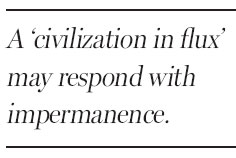Pop-ups start giddy but end grim
Updated: 2012-11-18 07:58
By Peter Catapano (The New York Times)
|
|||||||||||
Back in the playful, giddy days of spring and summer, before the winds picked up and the seas swelled, New York had a fling with impermanence.
Temporary restaurants, clubs or stores set up in vacant storefronts or raw spaces popped up without warning and disappeared in days. Chefs, retailers and party promoters seized the opportunity to test new ideas and to avoid the expense and time of running permanent establishments.
But this being New York, it soon became a full-blown trend. And this being New York, it soon began to annoy other New Yorkers.

"There's an epidemic in this town that seems to have reached crisis proportions in recent weeks," Neil Genzlinger wrote in The Times in August, lamenting what he called the Summer of the Pop-Up.
Mr. Genzlinger noted a pop-up food court called the Lot, and its spawn."Beside the Lot is a pop-up roller-skating rink sponsored by Uniqlo, a Japanese clothing concern," he wrote."And now, beside the pop-up skating rink, two cube-shaped stores have popped up. Last weekend they were selling T-shirts and cashmere sweaters.
"That's right, a pop-up has sprouted a pop-up, which has in turn sprouted two more pop-ups."
The approach was applied to problems like public health. The city brought temporary playgrounds to children in low-income neighborhoods, where lack of exercise and obesity were affecting children, The Times reported.
Allison Arieff looked at the upside of the structures not built to last, but to adapt. There is"undeniable opportunity in the temporary: it is an apt response to a civilization in flux," she wrote in The Times.
Impermanence took on a darker meaning when the winds and storm surges of Hurricane Sandy destroyed homes and beaches along the coast in the New York region at the end of October, killing more than 100 people. What had been built to last lifetimes was destroyed in a few hours.
A new sort of pop-up emerged as government, businesses and volunteers rushed to bring food, water and needed supplies to relief centers.

Joe Nocera, a columnist at The Times, toured the Rockaways, the Queens oceanfront community that was hit hard. Ten days after the storm, he found dozens of homes destroyed, debris piled shoulder high and thousands living without power or heat as temperatures hovered just above freezing. Many were lined up outside pop-up emergency centers - mostly churches - for food, water, blankets, clothing. There was little presence by the city or federal government.
Volunteers, Mr. Nocera wrote,"figured out how to help people in a disaster. They found restaurants willing to donate hot meals, rented buses for more volunteers and brought in supplies to help residents battle the cold."
Though New York's Mayor Michael R. Bloomberg had said before the storm that the city would not need emergency help from the federal government, "you don't have to spend much time in Queens," Mr. Nocera wrote,"to realize that New York City needs all the help it can get."
Summer was long gone. The fling with impermanence had turned deadly serious.
For comments, write to nytweekly@nytimes.com.
The New York Times
(China Daily 11/18/2012 page9)
Today's Top News
Rescuers race against time for quake victims
Telecom workers restore links
Coal mine blast kills 18 in Jilin
Intl scholarship puts China on the map
More bird flu patients discharged
Gold loses sheen, but still a safe bet
US 'turns blind eye to human rights'
Telecom workers restore links
Hot Topics
Lunar probe , China growth forecasts, Emission rules get tougher, China seen through 'colored lens', International board,
Editor's Picks

|

|

|

|

|

|





